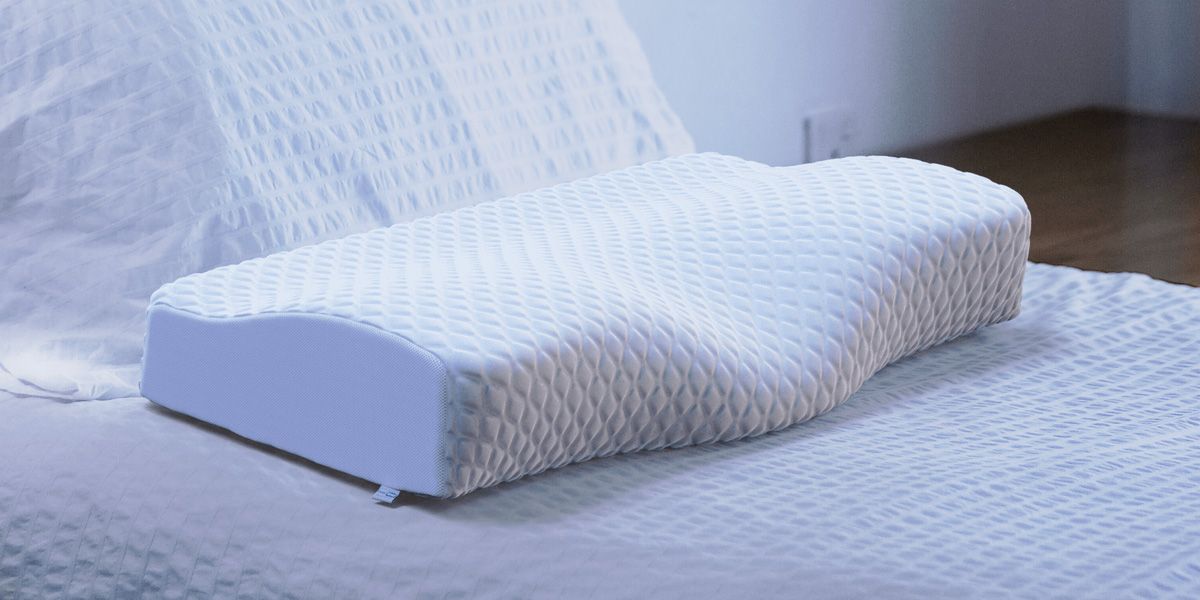Selecting the right pillow is crucial for side sleepers seeking both comfort and support. A well-chosen pillow not only helps maintain proper spinal alignment but also reduces the risk of neck and shoulder pain, enhancing overall sleep quality. This article provides essential insights into various pillow types, materials, and maintenance tips, guiding you in making an informed decision tailored to your specific needs.
By understanding the importance of pillow height, material properties, and care practices, you can ensure that your pillow serves you well over time, contributing positively to your sleep health. Dive in to explore how to find and maintain the perfect pillow for your sleeping habits.
Table of Contents
Choosing the Right Pillow Shape for Side Sleepers
Finding the perfect pillow can dramatically improve sleep quality, especially for side sleepers. This group often faces unique challenges due to the way their body aligns while resting. The right pillow shape plays a crucial role in providing adequate support and ensuring a restful night. In this guide, we will explore how to choose the best pillow shape for side sleeping, taking into account *support*, *comfort*, and individual *sleep preferences*.
Understanding the Anatomy of Side Sleepers
When lying on one side, the natural curvature of the spine must be maintained to prevent discomfort and long-term issues. This is especially important for the neck and shoulders, where improper alignment can lead to pain.
- Neck Alignment: A good pillow should fill the gap between the head and the mattress, keeping the neck aligned with the spine.
- Shoulder Relief: Some pillows are designed to provide extra cushioning around the shoulders, reducing pressure points that can cause discomfort.
- Supportive Height: The height of the pillow is critical. It should support the head so that the cervical spine remains in a neutral position.
Optimal Pillow Shapes for Side Sleepers
Various pillow shapes cater to the needs of side sleepers, allowing for personalized support:
- Contour Pillows: These pillows are designed with a distinctive shape that offers contoured support for the head and neck. They help maintain spinal alignment and reduce pressure on the cervical spine.
- Firm Pillows: A firmer pillow is often beneficial for side sleepers, as it holds the head in place without collapsing, helping to keep the spine aligned throughout the night.
- Body Pillows: For those seeking additional support, a body pillow can be used. Placing it between the knees helps maintain hip alignment, reducing strain on the lower back.
- Loose-Fill Pillows: These pillows allow you to adjust the height and loft by adding or removing filling. This feature makes them versatile for different preferences and body types.
Consider Sleeper Types and Preferences
While one pillow type may work well for one side sleeper, it may not suit another. Here are the considerations to take into account when selecting a pillow shape:
- Shoulder Width: Broader shoulders may require a thicker pillow to maintain alignment, whereas narrower shoulders may opt for a softer option.
- Height Preference: Some side sleepers prefer a higher loft to achieve optimal alignment, while others may feel more comfortable with a medium or low loft.
- Material Sensitivity: Individuals with allergies or sensitivities might prefer hypoallergenic materials or specific foam types that provide support without causing reactions.
Testing the Pillow
It’s essential to test the pillow before making a commitment. Here are some tips to ensure the chosen pillow meets individual needs:
- Trial Period: Many brands offer trial periods during which you can return the pillow if it doesn’t meet your expectations.
- Sleeping Position Simulation: Lie down in your typical side-sleeping position for at least 10-15 minutes to assess comfort and support.
- Consult with Professionals: If you have pre-existing neck or back problems, consulting with a healthcare professional or a sleep specialist can provide tailored recommendations.
In summary, selecting the right pillow shape for side sleepers is a vital aspect of ensuring overall sleep quality and comfort. Each sleeper has unique needs based on their body type and preferences, making it important to consider various shapes and materials. For more information on sleep solutions tailored to unique needs, consider checking out The Sleep Foundation, which offers comprehensive resources for improving sleep health.
Top Materials for Maximum Comfort and Support
When it comes to achieving a restorative night’s sleep, the materials that fill your pillow play a crucial role in providing the comfort and support you need. Different materials offer distinct benefits, and understanding these differences can help you make an informed choice tailored to your sleeping habits and preferences. Here’s a detailed look at some of the best materials to consider for your pillow.
Memory Foam
Memory foam is renowned for its ability to conform to your body shape, providing personalized support for your head and neck. When you lie down, the foam responds to your body heat and pressure, creating a cradle that alleviates strain on your pressure points. As a result, memory foam pillows have become increasingly popular among side sleepers who need extra support to maintain spinal alignment.
- Advantages: Excellent in contouring, reducing pressure points, and many models offer temperature regulation to prevent overheating.
- Considerations: They can sometimes retain heat and may emit an initial odor, which usually dissipates over time.
Latex
Latex pillows provide a buoyant and responsive feel. Unlike memory foam, which contours around the head and neck, latex maintains its shape, ensuring continual support throughout the night. This makes latex a great option for those who prefer a firmer pillow with a bit of bounce. Natural latex, derived from rubber trees, is also hypoallergenic and resistant to dust mites, which benefits allergy sufferers.
- Advantages: Durability, natural breathability, and resistance to mold and dust mites.
- Considerations: Some individuals may find latex too firm and it can be more expensive than other materials.
Down and Feather
Down and feather pillows offer a luxurious and soft sleeping experience. Made from the soft undercoat of ducks or geese, down pillows provide a plush feel and are highly adjustable. These pillows can be fluffed to fit individual preferences and sleeping positions, making them a versatile choice for many sleepers. However, it’s important to note that down pillows typically require more maintenance and can lose their shape over time.
- Advantages: Softness, lightweight, and excellent for those who enjoy a plush feel.
- Considerations: They may cause allergies for some and require frequent fluffing to maintain loft.
Synthetic Fill
Pillows with s synthetic fill, like polyester, provide an affordable alternative to down and feather options. These pillows mimic the softness of down while being hypoallergenic and easy to care for. A synthetic fill can range from soft to firm, catering to various sleep preferences.
- Advantages: Budget-friendly, easy to clean, and resistant to allergens.
- Considerations: They can compress more easily and may not offer the same level of support as higher-end materials.
Cooling Gel
Cooling gel pillows combine the contouring properties of memory foam with cooling technology. Infused with gel, these pillows help disperse heat, keeping you cool throughout the night. This feature is particularly beneficial for those who tend to sleep hot or experience discomfort from retaining heat.
- Advantages: Great temperature regulation, alleviating discomfort from heat and pressure.
- Considerations: Can be more expensive and might not provide the same level of firmness as solid memory foam alternatives.
Choosing the Right Material for You
Ultimately, the best pillow material depends on your personal preferences, sleep position, and any specific health considerations you may have. It’s vital to test different types of pillows to find the one that enhances your sleep quality the most. Reading customer reviews and trying out pillows in-store can also help you make an informed choice.
To explore additional pillow options and find the one that best suits your needs, check out Sleep Foundation’s guide on various pillow types and their benefits.
Adjustable Pillows: Finding Your Perfect Height
Choosing the right pillow height is crucial for ensuring restful sleep, especially for side sleepers. An adjustable pillow allows users to customize the loft and firmness, catering to individual preferences and specific sleeping positions. This personalized approach significantly enhances sleep quality and overall well-being.
Understanding Pillow Height
Pillow height, often referred to as loft, is the distance from the pillow surface to the top edge. For optimal spinal alignment, side sleepers typically require a higher loft compared to back or stomach sleepers. Incorrect pillow height can lead to neck and shoulder pain, potentially exacerbating pre-existing conditions or causing new discomfort.
- Low Loft: Usually around 2-4 inches, suitable for stomach sleepers.
- Medium Loft: Ranging from 4-6 inches, preferred by back sleepers.
- High Loft: About 6 inches and above, ideal for side sleepers.
The Benefits of Adjustable Pillows
Adjustable pillows offer unique benefits that traditional pillows cannot. The primary advantage is their customizability. Users can easily add or remove filling materials, such as memory foam, latex, or polyester, to achieve their desired loft. Here are some specific benefits of using adjustable pillows:
- Personalized Comfort: Tailoring the pillow height to individual comfort preferences ensures a perfect fit for every type of sleeper.
- Improved Spinal Alignment: By adjusting the loft, users can maintain proper spinal alignment, reducing the risk of waking up with neck or back pain.
- Versatility: These pillows cater to all sleeping positions—simply adjust as needed when changing positions during the night.
- Long-term Cost-Effectiveness: Investing in an adjustable pillow can eliminate the need for multiple pillows for different sleep positions, making it a cost-effective solution.
How to Find Your Ideal Pillow Height
Determining the best height for your adjustable pillow involves several considerations:
- Sleeping Position: Side sleepers generally benefit from a higher loft, while back and stomach sleepers should opt for medium to low lofts.
- Shoulder Width: Wider shoulders require more height to fill the space between the head and mattress. Conversely, narrower shoulders might need a lower loft.
- Neck and Spine Alignment: When lying on your side, your neck should remain parallel to your spine. Adjust the pillow height until you maintain this alignment.
- Personal Preference: Comfort can be subjective, so take the time to experiment with different heights and materials to see what feels best for you.
Practical Tips for Adjustment
Once you obtain your adjustable pillow, consider these practical tips to fine-tune its height:
- Start with a Medium Loft: Initially, set the pillow to a medium height and make adjustments based on comfort levels.
- Monitor Your Sleep Quality: Track how you feel upon waking and adjust the loft accordingly over a few nights.
- Regular Adjustments: As your sleep position or comfort needs change, don’t hesitate to readjust the pillow height periodically.
- Consultation with a Specialist: If you experience persistent discomfort, consult a healthcare provider to ensure your pillow choice aligns with your spinal health.
Conclusion
Finding the perfect pillow height is a key element in enhancing sleep quality, particularly for side sleepers. With an adjustable pillow, achieving optimal comfort and support becomes a matter of personal preference and minor adjustments. The right height can transform your sleep experience, leading to better rest, improved spinal alignment, and reduced discomfort.
For more detailed information on sleep health and products, consider exploring resources like The Sleep Foundation.
How to Maintain Your Pillow for Longevity and Health
Your pillow is an essential component of a healthy sleep environment, contributing to your comfort and overall well-being. However, many people overlook the importance of proper pillow maintenance. A well-maintained pillow not only lasts longer but also supports your health by ensuring it remains clean and free of allergens. Here’s a comprehensive guide on how to maintain your pillow for both longevity and health.
Regular Cleaning: Keeping Allergens at Bay
One of the primary reasons for maintaining your pillow is to prevent the accumulation of dust mites, allergens, and bacteria. Here’s how to keep your pillow clean:
- Check the Care Label: Always refer to the manufacturer’s instructions regarding cleaning. Different pillow materials require different care.
- Wash Frequency: Ideally, you should wash your pillow every 3 to 6 months. If you suffer from allergies, consider washing it more frequently.
- Machine Washing: Most synthetic and feather pillows can be machine washed. Use a gentle cycle with mild detergent and ensure they are thoroughly rinsed to remove any soap residue.
- Drying: Dry your pillows completely to prevent mold and mildew. Use low heat settings in the dryer and add a couple of tennis balls or dryer balls to keep the filling fluffy.
- Spot Cleaning: For stains, use a mixture of fabric detergent and water. Gently dab the stained area with a cloth to avoid spreading.
Fluff and Air Out Regularly
Fluffing your pillow helps maintain its shape and prevents it from becoming flat and lumpy. Here are a few tips:
- Daily Fluffing: Make it a habit to fluff your pillow every morning. This simple act redistributes the filling and keeps it comfortable.
- Air It Out: Every couple of weeks, take your pillow outside on a sunny day. Fresh air and sunlight help eliminate odors and reduce allergens.
Use Protective Covers
Investing in a quality pillow protector not only prolongs the life of your pillow but also contributes significantly to your health:
- Allergy Protection: Hypoallergenic covers are particularly beneficial for those with allergies, as they create a barrier against dust mites and other allergens.
- Stain Resistance: A protector can prevent stains from sweat, oils, and spills, which can degrade the pillow material over time.
- Easy Care: Most pillow protectors are machine-washable, making it easy to keep your sleeping environment clean.
Signs of Wear: When to Replace Your Pillow
Even with proper maintenance, pillows do not last forever. Here are some signs that it’s time to replace your pillow:
- Lumps and Clumps: If your pillow feels uneven or has lumps, it may be time for a replacement to maintain proper head and neck alignment.
- Persistent Odors: A persistent musty smell is a clear indication of collection of moisture or bacteria, suggesting it might be time for a new pillow.
- Allergy Flare-Ups: If you notice increased allergy symptoms after sleeping, it might indicate that your pillow has become a breeding ground for allergens.
Maintain Pillow Hygiene with Additional Practices
In addition to cleaning and protective measures, consider adopting these habits for better pillow hygiene:
- Regularly Change Pillowcases: Change your pillowcase at least once a week to keep it clean and free from sweat and skin oils.
- Use Natural Fabrics: Choosing pillowcases made from breathable materials like cotton or bamboo can help regulate temperature and moisture, reducing the risk of mold.
By following these maintenance tips, you can ensure that your pillow not only supports a good night’s sleep but also contributes positively to your health over time. Investing a little time and effort into the care of your pillow can lead to improved sleep hygiene and overall well-being.
For more detailed insights on pillow care, you might find this resource on Sleep Foundation useful. Choosing the right pillow is crucial for achieving quality sleep, especially for side sleepers. Consider factors such as shoulder width, preferred pillow height, and material sensitivity when selecting a pillow. Options like memory foam, latex, and adjustable pillows cater to different needs, allowing for personalized comfort and support. Testing the pillow in your typical sleeping position is essential, and opting for brands that offer trial periods can help ensure satisfaction.
Maintaining your pillow is equally important for longevity and health. Regular cleaning every 3 to 6 months, daily fluffing, and using protective covers can keep your pillow in good condition and free from allergens. Be mindful of signs that indicate it’s time to replace your pillow, such as lumps, persistent odors, or allergy flare-ups. Implementing these tips can significantly enhance your sleep hygiene and overall well-being.





